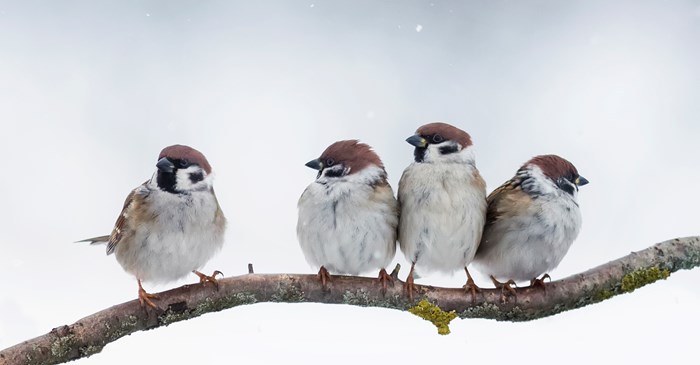As the weather turns frigid, it’s more important than ever to keep feeding the birds that may be scrounging for sustenance.
Because birds have such high metabolisms, they require a high daily food intake just to sustain energy. In general, the smaller the bird, the more food it needs relative to its weight; for example, a chickadee must consume the equivalent of 35% of its weight each day just to survive.
That food is naturally harder to find when the ground is frozen and plants and insects are dormant. That’s partly why songbird mortality can be 30 to 50% each winter depending on weather conditions and the availability of food, according to Ornithology.com.
On a happier note, keeping local birds fed in the wintertime simply makes for enjoyable bird watching.
“During periods of bad weather, birds will come to rely on your feeders as an essential source of food,” notes Holly Reaney on Homesandgardens.com. “Easy-to-find and nutritious seed and fats will help your feathered friends to conserve their energy – using it to keep warm rather than hunting down scarce berries and insects”.
With that in mind, here are suggestions for providing the best possible food sources for your aviary friends this season.
- Consider providing a variety of bird feeders – with different ports, perches, and dispensing trays -- to serve a wide variety of species. Ideally, feeders should have covers that offer some shelter from snow and ice. Fly-through platform designs can be especially useful.
- Try to position feeders in areas that offer shelter from the wind, weather, and predators, perhaps adjacent to hedges or brush piles that may provide shelter (think 10 feet away to deter predators).
- Stomp down fallen snow around feeders to enable ground-feeding birds to partake of fallen seed.
- Frequently empty and refill feeders to check for mold, mildew, or fungus, cleaning and sanitizing them as needed.
- Choose bird foods that are high in fat or oil, such as black or black oil sunflower seed; mixed seeds; hulled peanuts; peanut butter; thistle seed; suet mixed with fruit or seeds; cracked corn; or white millet seed. Grated cheddar cheese, fruit; mealworms, or baked and crushed eggshells are possible additions. You may wish to take note of which species are common to your yard so you can plan your smorgasbord more strategically.
- Store your seed indoors in a cool, dry, well-covered place to protect it from scavenging insects and rodents.
- Consider putting out different food for hungry wildlife in a location separate from your birdfeeders to deter birdseed raids.
- Continually provide birds fresh water, perhaps via a heated birdbath that also allows them to keep clean.
- To sustain birds that have become reliant on your food, ask friends, neighbors, or family members to keep refilling your feeders if you go on vacation.
Find some of the most nutritious bird foods on the market – such as Fruit & Nut High Energy Mix -- at Lyric Wild Bird Food. The no-filler blend of select fruits, seeds, and shell-free nuts is designed to attract a wide variety of species, including chickadees, robins, orioles, Blue Jays, titmice, buntings, cardinals, grosbeaks, towhees, nuthatches and cedar waxwings.
